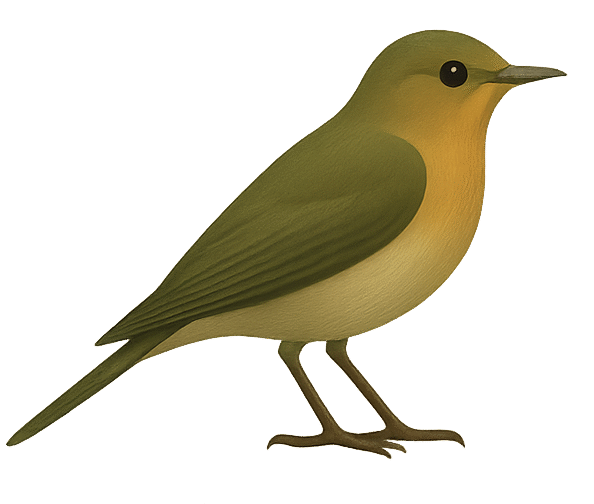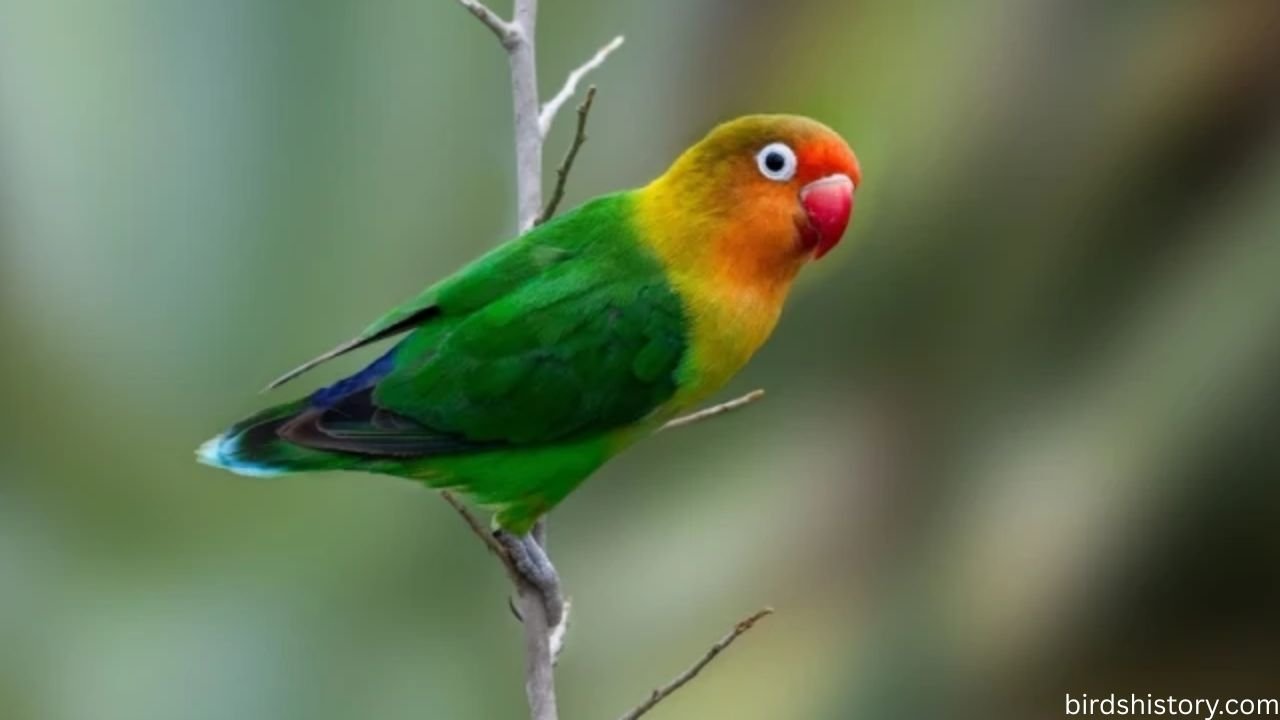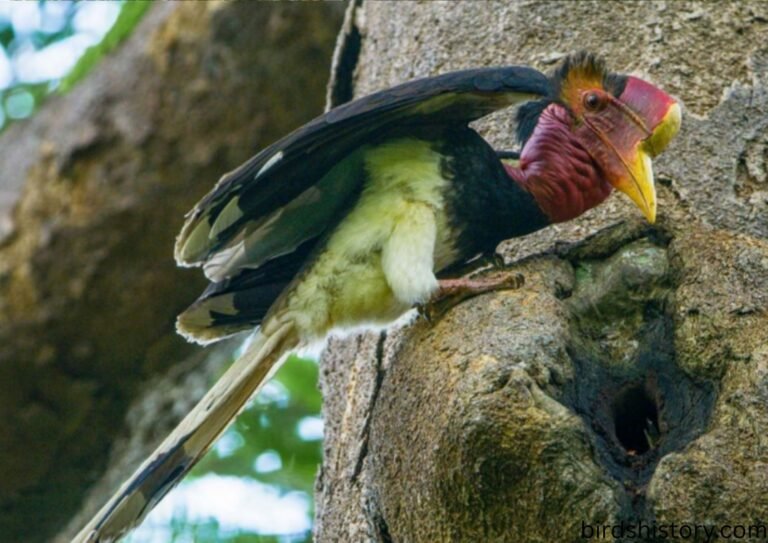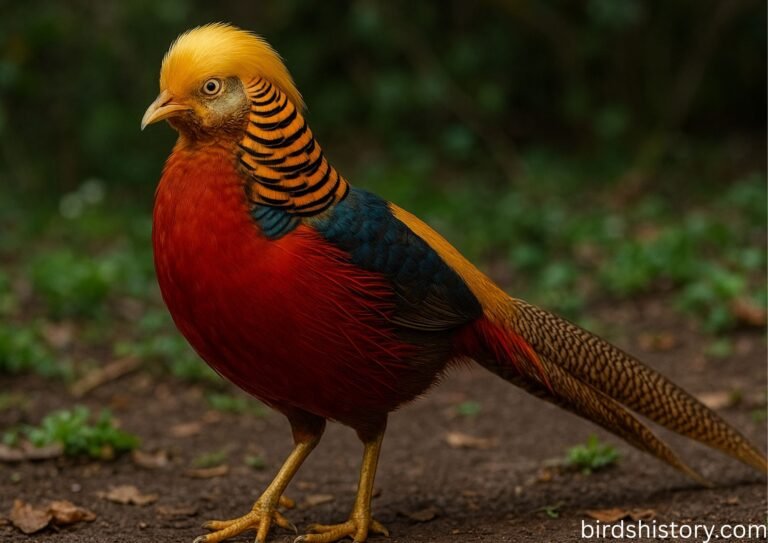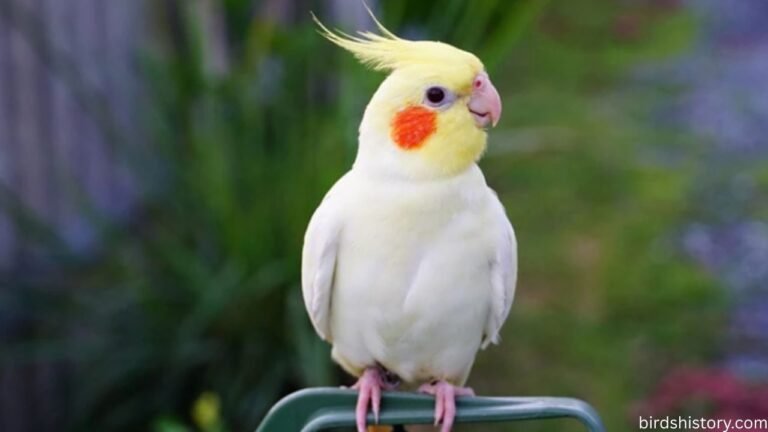Lovebirds: Nature’s Colorful Symbols of Affection
Few birds have captured human fascination the way lovebirds have. These small, brightly colored parrots are adored not only for their beauty but also for their personalities. Native to Africa, lovebirds are famous for forming strong bonds with their partners, a trait that has earned them their charming name.
Whether you’ve seen them snuggled together in pairs, whistling away on a perch, or fluttering gracefully in the wild, lovebirds leave a lasting impression. What’s surprising is that despite their small size, they are packed with character, intelligence, and affection. They are playful, social, and even mischievous at times, which makes them beloved as both wild birds and popular pets.
In this guide, we’ll take a detailed look at lovebirds—covering their scientific background, physical traits, habitats, diet, behaviors, reproduction, threats, and more. By the end, you’ll understand why these little parrots are such an important part of both nature and human companionship.
Lovebird Taxonomy / Classification
- Common Name: Lovebird
- Scientific Name: Agapornis (from Greek: “agape” meaning love, and “ornis” meaning bird)
- Family: Psittaculidae
- Order: Psittaciformes
- Class: Aves
Also read: /california-condor/
Lovebirds belong to the parrot family and are closely related to other small parrots found in Africa and nearby islands. There are nine recognized species of lovebirds, including the Peach-faced Lovebird (Agapornis roseicollis), Fischer’s Lovebird (Agapornis fischeri), and the Black-masked Lovebird (Agapornis personatus). Each species has slight variations in color, markings, and behavior, but they share the same general charm and affectionate nature.
Physical Description
Lovebirds are small but striking parrots.
- Size: About 5 to 7 inches (13 to 17 cm) in length.
- Weight: Around 40 to 60 grams.
- Coloration: Highly variable depending on the species. Common colors include green, yellow, orange, peach, and blue. Some species have distinct facial markings, like the bright peach face of the Peach-faced Lovebird.
- Beak: Short, strong, and curved, adapted for cracking seeds and nuts.
- Wings & Tail: Short, rounded wings and a relatively short, blunt tail.
- Crest/Markings: Unlike cockatiels or cockatoos, lovebirds do not have head crests.
Male vs. Female:
In many species, males and females look almost identical, which makes sexing difficult without DNA testing. However, in some species, females may be slightly larger or have broader heads.
Unique Traits:
Their most iconic trait is their social behavior. Lovebirds are rarely seen alone. They form close pairs and often sit pressed together, grooming each other affectionately. This behavior has made them a symbol of love and companionship across cultures.
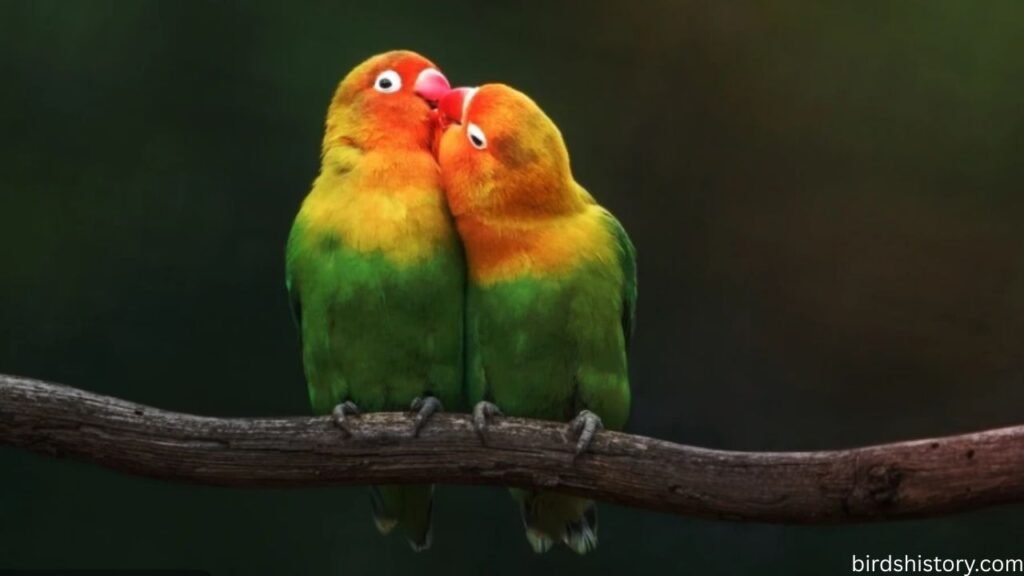
Lovebird Habitat and Range
Lovebirds are native to sub-Saharan Africa and Madagascar. Their range varies by species:
- Peach-faced Lovebird: Found in arid regions of southwestern Africa, particularly Namibia and Angola.
- Fischer’s Lovebird & Masked Lovebird: Native to Tanzania and surrounding regions.
- Madagascar Lovebird: Endemic to Madagascar.
Preferred Environments:
Lovebirds thrive in woodlands, savannas, scrublands, and edges of forests. They are adaptable and can survive in both arid and semi-arid environments, provided there is access to water. Some populations have even adapted to urban areas where food is available.
Unlike migratory birds, lovebirds are non-migratory and remain within their territories throughout the year.
Lovebird Diet and Feeding Habits
Lovebirds are primarily granivores and frugivores, meaning they feed on seeds and fruits.
- Typical Diet: Seeds, grasses, berries, fruits, nuts, and occasionally buds or small crops.
- Feeding Style: They use their strong beaks to crack open seeds and shells. In the wild, they may forage on the ground or in shrubs and trees.
- In Captivity: A balanced diet includes seed mixes, fresh vegetables, leafy greens, and occasional fruits. Exclusively seed-based diets can cause nutritional deficiencies, so a varied diet is essential.
An interesting feeding behavior is their tendency to feed in groups, which offers protection from predators.
Behavior and Lifestyle
Lovebirds are some of the most social parrots in the world.
- Social Structure: They live in flocks in the wild, ranging from small groups to larger gatherings depending on food availability.
- Bonding: Their name comes from their strong monogamous pair bonds. Once two birds form a bond, they spend much of their time together.
- Communication: Lovebirds are vocal, producing high-pitched chirps and whistles. They are not known for clear mimicry like larger parrots, but they can learn simple tunes or whistles.
- Flight Style: Fast and direct, with quick wingbeats.
- Playful Nature: They love climbing, chewing, and exploring. In captivity, they require toys and activities to stay mentally stimulated.
Mating rituals often involve feeding each other, preening, and synchronized movements, reinforcing their close bonds.
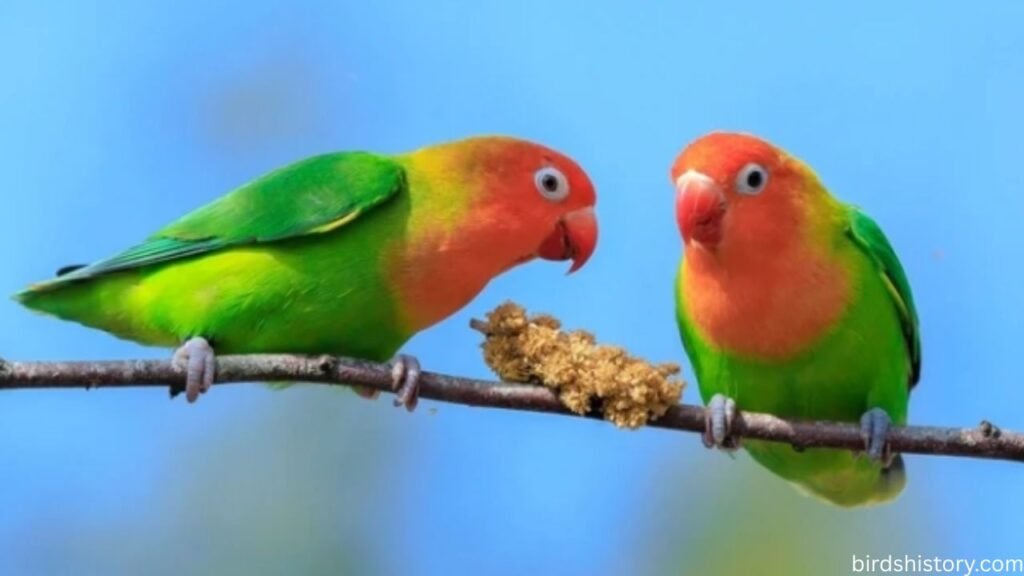
Lovebird Reproduction and Lifespan
- Breeding Season: Varies depending on region but often occurs in the rainy season when food is abundant.
- Nesting: Lovebirds are cavity nesters. In the wild, they use holes in trees, rock crevices, or abandoned nests. Some species, like the Peach-faced Lovebird, carry nesting material tucked in their feathers.
- Eggs: Females typically lay 3 to 6 white eggs. Incubation lasts about 21 to 23 days.
- Parental Care: The female incubates while the male provides food. Once hatched, chicks fledge at around 6 weeks.
- Lifespan: In the wild, lovebirds live around 10 years. In captivity, with proper care, they can live 12 to 15 years, sometimes longer.
Predators and Threats
In the wild, lovebirds face a range of threats:
- Natural Predators: Raptors (hawks, falcons), snakes, and some small mammals.
- Environmental Threats: Drought, habitat destruction, and competition for nesting sites.
- Human Impact: Capture for the pet trade has affected some species, especially Fischer’s Lovebird and Black-cheeked Lovebird.
Despite their resilience, habitat loss remains a major threat to wild populations.
Lovebirds Conservation Status
The conservation status of lovebirds varies by species:
- Peach-faced Lovebird: Least Concern, stable population.
- Fischer’s Lovebird: Near Threatened due to habitat loss and trapping.
- Black-cheeked Lovebird: Vulnerable, with declining numbers.
- Other species: Range from stable to declining depending on region.
The IUCN Red List recognizes some species as threatened, highlighting the importance of conservation efforts. Protecting natural habitats and regulating the bird trade are crucial steps.
Interesting Facts about Lovebirds
- Lovebirds earned their name because of their affectionate pair bonding behavior.
- They are among the smallest parrots, yet they display remarkable intelligence.
- Unlike some parrots, lovebirds are not strong talkers but are excellent whistlers.
- Peach-faced Lovebirds in Arizona have formed feral colonies after escaping captivity.
- In some cultures, they are considered symbols of romance and fidelity.
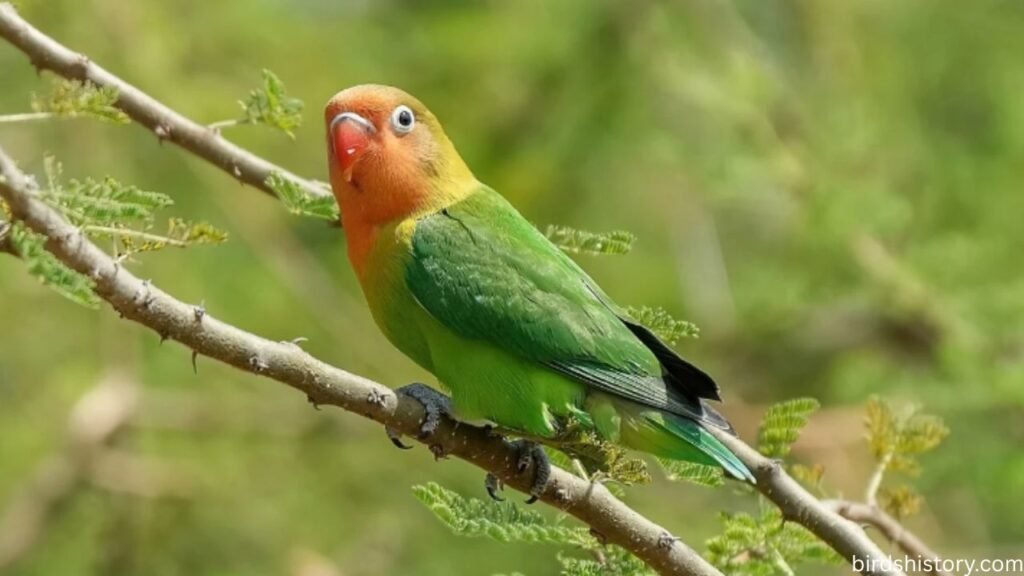
Conclusion
Lovebirds are small in size but rich in personality. Their vivid colors, strong social bonds, and lively behavior make them stand out among parrots. Beyond their charm, they remind us of the importance of companionship, care, and connection—qualities we can all relate to.
Understanding lovebirds in the wild and as pets helps ensure that we protect them for future generations. Whether you admire them in their natural African habitats or enjoy their company in your home, lovebirds are truly nature’s little ambassadors of love.
FAQs About Lovebirds
1. Why are they called lovebirds?
Because they form strong pair bonds and are often seen sitting close together, grooming and feeding each other.
2. Can lovebirds talk like parrots?
They are not great talkers, but some can learn simple words or whistles.
3. What do lovebirds eat?
Seeds, fruits, vegetables, and leafy greens.
4. How long do lovebirds live?
On average, 10 years in the wild and up to 15 years in captivity with good care.
5. Are lovebirds good pets?
Yes, but they require attention, space, and mental stimulation.
6. Do lovebirds need to be kept in pairs?
They thrive with companionship, but a single bird can bond closely with its human if given enough attention.
7. Where are lovebirds found in the wild?
They are native to Africa and Madagascar.
8. Are lovebirds endangered?
Some species are threatened due to habitat loss and the pet trade, while others remain stable.
9. Do lovebirds migrate?
No, they are non-migratory.
10. What makes lovebirds unique compared to other parrots?
Their small size, colorful appearance, and affectionate pair bonds.
